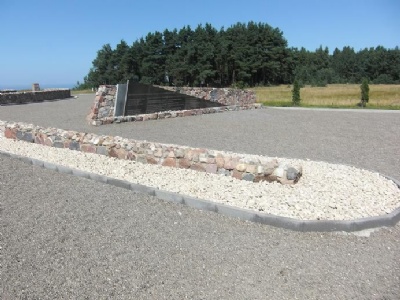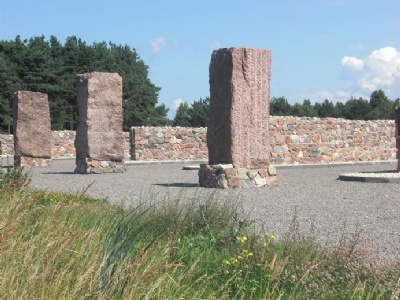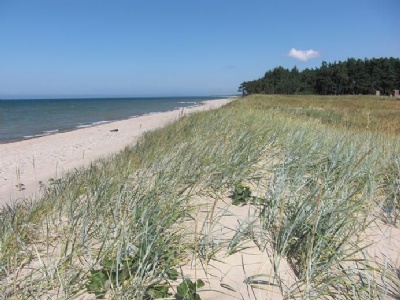Skede
On Latvia’s east coast lies the town of Liepaja, which during the German occupation between 1941 and 1944 was called Libau. When Germany attacked the Soviet Union in June 1941, about 7,400 Jews lived in Liepaja and the town was occupied by german troops, June 29. At the beginning of July, german anti-jewish regulations were introduced. Jews were also forced to wear a yellow star of David on their clothing as an identification mark when outdoors. Jews were also forced into slave labor. Same month, about 1,000 Jews were murdered at two separate actions at a place called Skede on the Baltic coast north of the city. Jews were murdered by units from Einsatzgruppe A and Latvian nationalists who voluntarily participated in the murders. In November 1941, the Nazis noted that there were barely 4,000 Jews left in the city.
On December 14, 1941, a large round-up operation was carried out where Jews who did not have special work permits were brought to Skede. Between 15 and 17 December, about 3,000 Jews were murdered at the site and buried in pre-dug mass graves. Two minor actions were carried out in February and April 1942. In addition to Jews, about 1,000 Soviet prisoners of war were murdered in Skede. In 1942, there were about 850 Jews in Libau. These were Jews who were considered important for German war industry and they had to move into a ghetto. In 1943, the ghetto was liquidated and the remaining Jews were sent to Kaiserwald concentration camp in Riga. When the Soviet Red Army liberated (reoccupied) Liepaja, there were barely 30 Jews alive in the city.
Current status: Monument (2009).
Location: 56°35'58.8" N 21°01'17.6" E
Get there: Car.
Follow up in books: Arad, Yitzhak: Holocaust in the Soviet union (2009).




A number of photographs from the 1941 December killings were found in May 1945. The photographs are a unique documentation in the sense that it was officially photographed. The photographer follows a group of people from their arrival at the site, their undressing, their lining up at the mass grave, their last seconds before bieng machine gunned and when they lay in the mass grave among other dead Jews. There is also film sequences from the executions. It is difficult to determine why the Nazis documented these murders because it was strictly forbidden to make any photo or film documentation of the executions. These images are not the only ones that exist of the Einsatzgruppen’s actions but they seem to be the only ones sanctioned by the Nazis themselves. They were probably taken to be shown to higher SS officers. Other images have, despite being prohibited, been taken openly or in secret by curious onlookers.